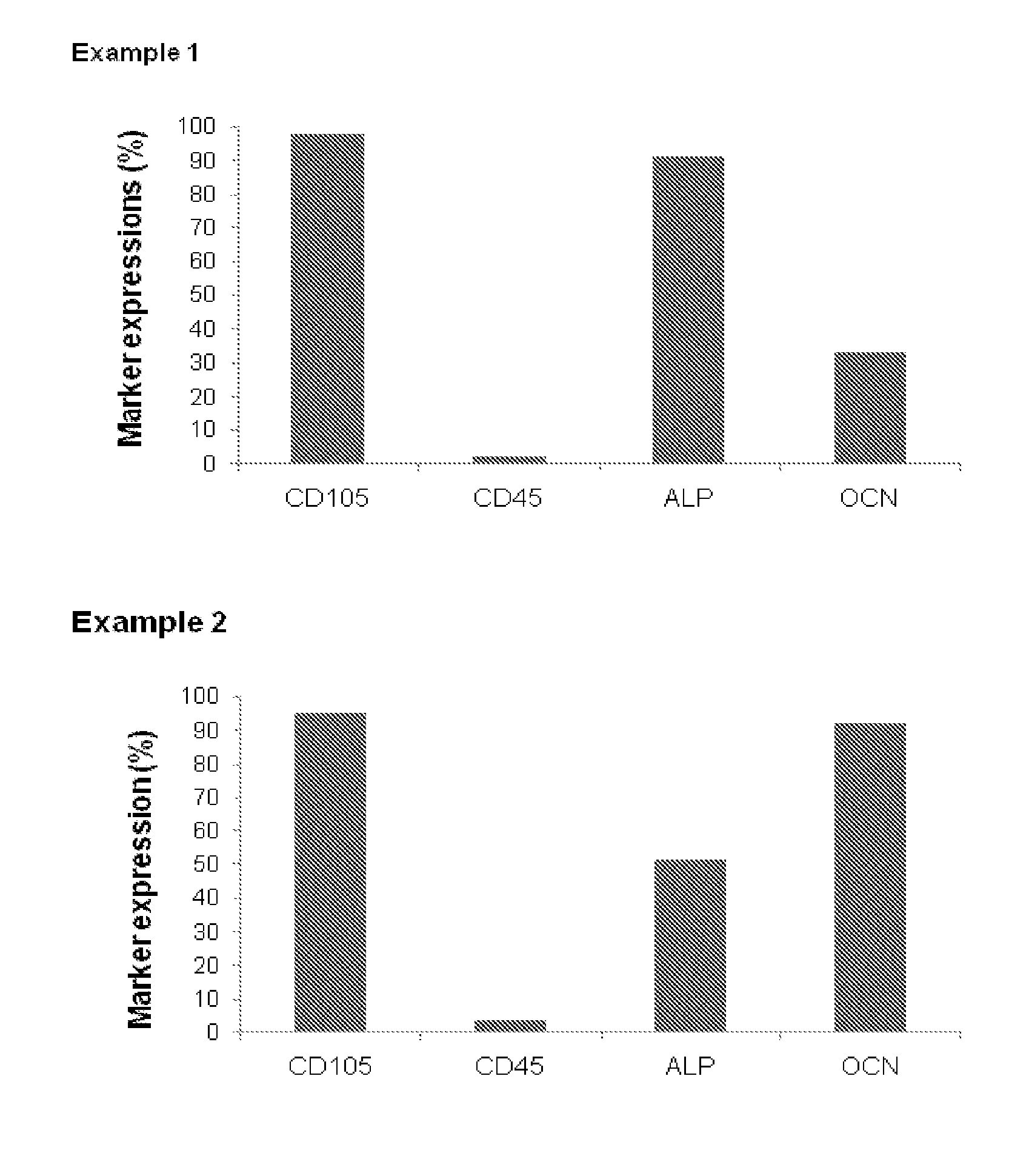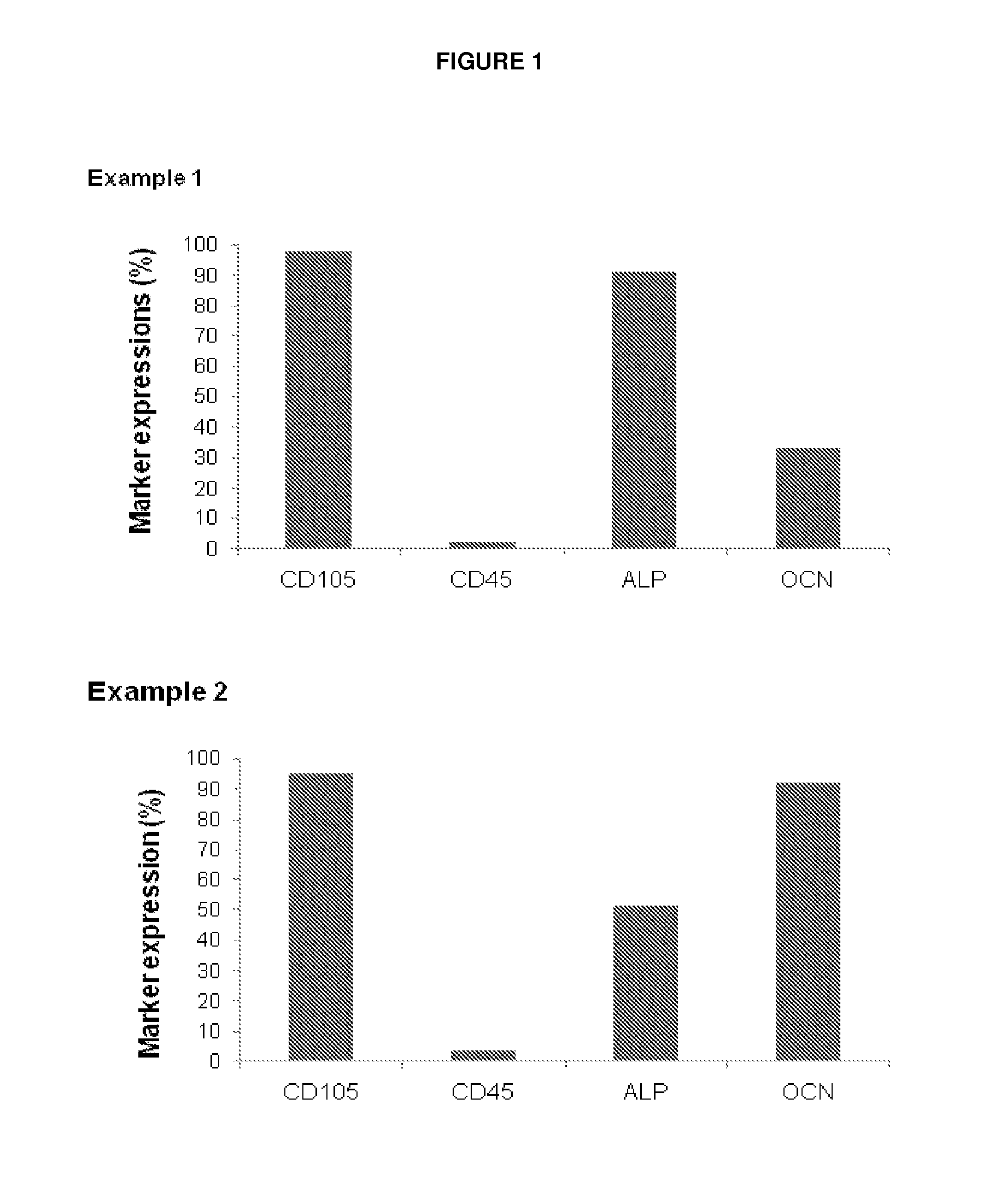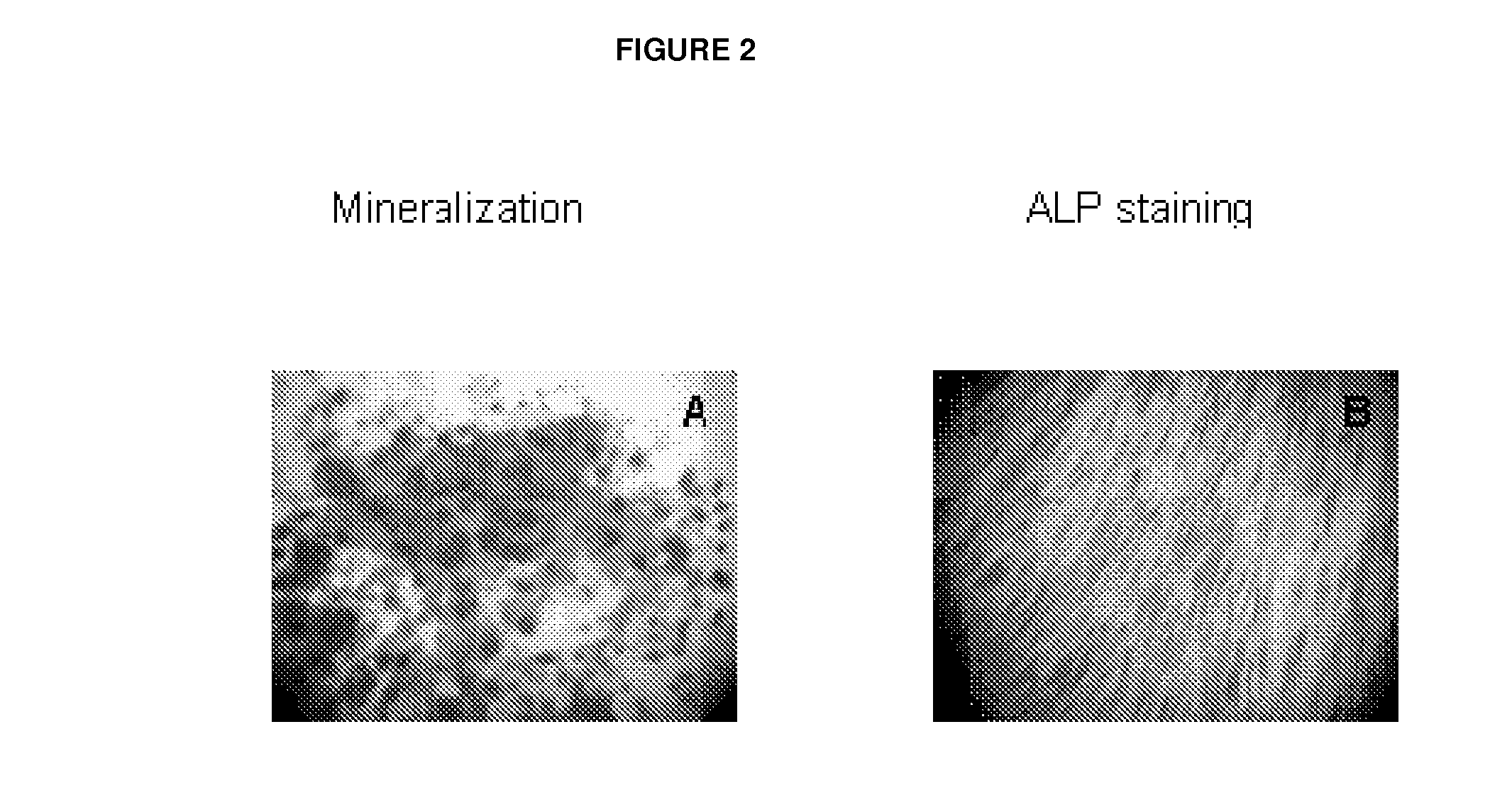Human Bone-Forming Cells In The Treatment of Inflammatory Rheumatic Diseases
a technology of bone-forming cells and inflammatory rheumatic diseases, which is applied in the direction of skeletal/connective tissue cells, biocide, plant growth regulators, etc., can solve the problems of not disclosing the mechanism of tissue rejection in allogeneic transplantation is evidently different from the mechanism underlying inflammation, and the use of bone-forming cells cannot be disclosed
- Summary
- Abstract
- Description
- Claims
- Application Information
AI Technical Summary
Benefits of technology
Problems solved by technology
Method used
Image
Examples
example 1
Experimental Procedures
[0056]In the following, procedures are described leading to derivation of bone-forming cells either (A) from bone marrow stem cells (BMSC) substantially as described in WO 2007 / 093431, or (B) by further differentiating the cells of (A) in osteogenic medium, or (C) by expanding osteoblasts from trabecular bone.
A. Osteoblast Derivation from BMSC
[0057]20 to 60 ml of heparinized bone marrow (BM) were obtained from iliac crest of patients suffering from bone diseases. BM was mixed with phosphate-buffered saline (PBS, 2v:v) and layered on density gradient Ficoll solution. After centrifugation, mononuclear cells were harvested from the interface and washed twice in PBS. In parallel, serum from patients or healthy donors was obtained after centrifugation of 160 ml of blood drained into dry tubes. The cells were resuspended in alpha MEM medium supplemented with 20% allogeneic plasma and 10 ng / ml FGF2 (or with another growth factor known in the art to induce osteoblast ...
example 2
Model of In Vivo Inflammation (IRD)
Model of Carrageenan-Induced Ankle / Paw Inflammation (1)
[0072]Inflammation was induced by injection of a solution containing 1% Carrageenan (CARRA; Sigma, Switzerland) in PBS into the hind paw of 8 weeks old SWISS mice; each animal receiving a single injection in each hind paw (Table 3). Carrageenan-injected animals received immediately after injection or PBS only, or a solution of Dexamethasone (DEX; Sigma Switzerland) at a concentration of 1 mg / kg, or 1*106 human bone-forming cells (OB) (derived from bone marrow mesenchymal stromal cells as described in Example 1A) or a combination of DEX and OB.
TABLE 3experimental protocolGroups (n = 4)Left hind pawRight hind paw#1CARRA 0.7%CARRA 0.7% + DEX (1 mg / kg)#2CARRA 0.7%CARRA 0.7% + OB 106#3CARRA 0.7%CARRA 0.7% + DEX + OB#4CARRA 0.7%PBS
[0073]Under isoflurane sedation, the circumference of ankles and paws was measured using a digital caliper before the injection at T0, and at T1, T4 and T24; respectively b...
PUM
 Login to View More
Login to View More Abstract
Description
Claims
Application Information
 Login to View More
Login to View More - R&D
- Intellectual Property
- Life Sciences
- Materials
- Tech Scout
- Unparalleled Data Quality
- Higher Quality Content
- 60% Fewer Hallucinations
Browse by: Latest US Patents, China's latest patents, Technical Efficacy Thesaurus, Application Domain, Technology Topic, Popular Technical Reports.
© 2025 PatSnap. All rights reserved.Legal|Privacy policy|Modern Slavery Act Transparency Statement|Sitemap|About US| Contact US: help@patsnap.com



